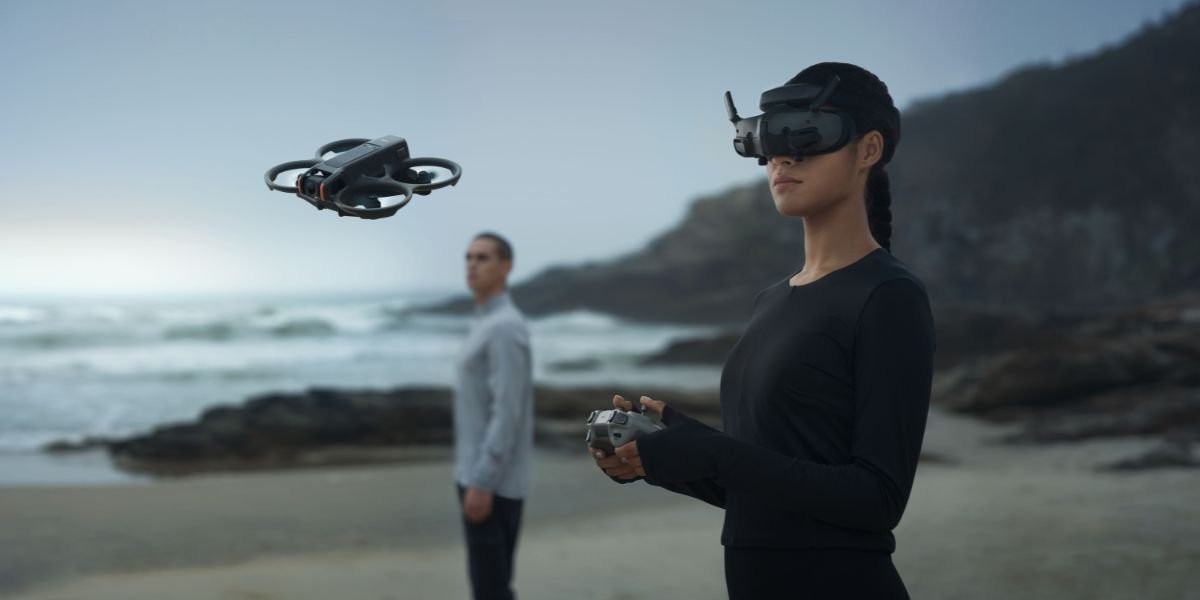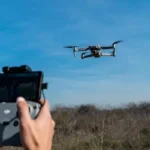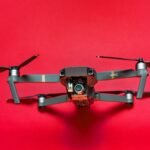Introduction to Drone Avatars
Drone avatars represent a fascinating intersection of technology and personal interaction. In simple terms, a drone avatar is a remotely operated drone equipped with cameras and sensors, often used to replicate human presence in various environments. You might even think of them as our digital extensions, allowing us to interact with the physical world without being physically present. These drones can perform tasks such as surveillance, capturing images and video, or even social interaction in specific settings—sometimes in ways that can truly seem futuristic!
What are Drone Avatars?
As humanity pushes further into the realm of innovation, drone avatars emerge as a key player, combining the capabilities of traditional drones with the concept of virtual presence. Imagine controlling a drone that not only navigates your surroundings but also engages with other people and interfaces in real-time. Here’s a breakdown of what drone avatars do:
- Remote Operation: You can operate them from anywhere via a smartphone or computer, making them incredibly versatile.
- Communication: Some drone avatars are designed to facilitate communication, equipped with microphones and speakers, enabling conversation with people on the ground.
- Surveillance and Monitoring: They provide a bird’s-eye view of various locations, playing a significant role in security applications.
- Data Collection: These drones are capable of gathering data from the environment, making them invaluable in research and monitoring contexts.
Think about it: if you’re a busy professional, what if you could send a drone avatar to attend a meeting for you while you focus on other tasks? It’s not just about flying a drone; it’s about being able to be present anywhere. While this technology is still emerging, its potential is vast. Industries from agriculture to media are starting to recognize how useful these drones can be.
History of Drone Avatars
The journey of drone avatars is deeply rooted in the development of drone technology itself. Here’s a quick stroll through their historical timeline:
- Early Innovations (1900s-1960s): The concept of remote-controlled planes can be traced back to early aviation. The first significant use was during World War I, where basic reconnaissance planes were remotely piloted.
- Recreational Drones (2000s): The rise of consumer-grade drones began in the early 2000s, with brands like DJI taking flight. These drones were primarily designed for recreation and personal photography, yet the infrastructure for remote operation was laid.
- Development of Intelligent Systems (2010s): As technology advanced, drones began incorporating sophisticated sensors, cameras, and communication tools. This period marked the growth of autonomous flying capabilities and computerized navigation.
- Emergence of Avatars (Late 2010s-Present): The idea of drone avatars started to gain traction. Innovations in virtual reality (VR) and artificial intelligence (AI) led to drones that could mimic human interaction more effectively. Companies are now developing drones capable of movement and interaction—allowing remote users to “be present” in different locations.
- Commercial Use and Regulations (2020s): As drone avatars became more integrated into various sectors, regulations began to shape their usage. Organizations are now keenly looking at the benefits of employing drones for tasks that require a human touch without the physical presence.
In this evolution, personal stories stand out. One instance involves a company that needed to inspect hard-to-reach infrastructures—think tall buildings or remote farms. Instead of sending people into potentially dangerous situations, they deployed drone avatars, allowing remote experts to assess conditions without being there physically. This not only improved safety but also increased efficiency. Moreover, academic institutions and research labs began experimenting with drone avatars for environmental monitoring, health care, and even providing remote tours of locations. The usages are diverse, showcasing the flexibility and adaptability of these devices.
Interesting Milestones
- In 2016, the first true drone avatar was deployed for interactive communication in community events, allowing people to “talk” to participants from afar.
- By 2018, hospitals began experimenting with drone avatars to deliver medicines to patients in isolated locations.
- In 2022, a social media network launched a full-scale initiative to explore using drone avatars for virtual meetups, making it a novel approach to social interaction.
In summary, the evolution of drone avatars illustrates how technology can bridge distances and create new forms of interaction. As drones become more advanced, the potential applications for drone avatars continue to grow—leading us to new and exciting possibilities. As you dive deeper into this subject in subsequent sections, consider how drone avatars could reshape the way we connect with each other and interact with our environments. The future holds intriguing avenues with these digital emissaries, reshaping various industries along the way.
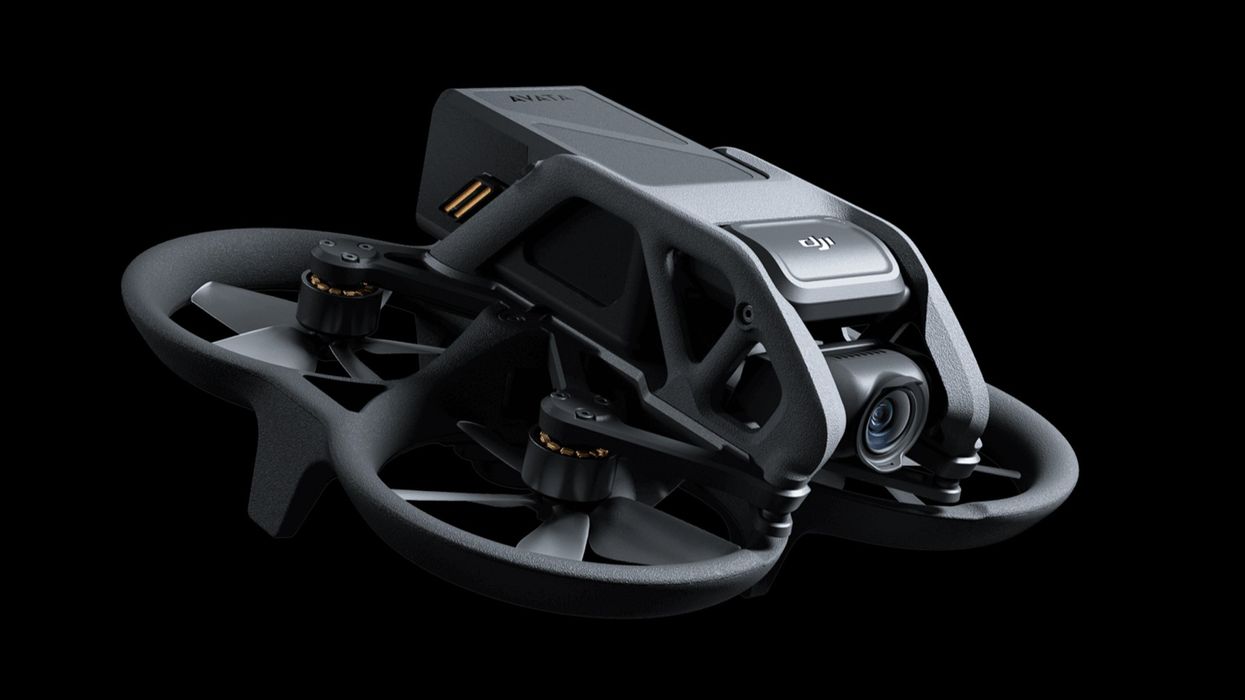
Applications of Drone Avatars
As we delve into the multifaceted applications of drone avatars, it becomes clear that these innovative machines are transforming various industries by enhancing efficiency and introducing new capabilities. The versatility of drone avatars finds its most impactful expressions in areas such as surveillance and security, as well as agriculture and environmental monitoring. Let’s explore how these drone avatars are being employed in these critical sectors.
Surveillance and Security
One of the most visible and immediate applications of drone avatars is in the realm of surveillance and security. These drones can cover vast areas and provide real-time data that was previously difficult or even dangerous to obtain. Here are some key ways drone avatars are making a difference:
- Real-Time Monitoring: With high-definition cameras and advanced sensors, drone avatars can monitor areas continuously. Whether for securing a large event like a concert or ensuring the safety of secure facilities, these drones provide a bird’s-eye view that is invaluable.
- Crime Prevention: Drones can patrol locations and deter criminal activity. Imagine a shopping center or a park equipped with drone avatars; their presence alone can significantly reduce loitering and other unlawful activities. Police departments around the world have started integrating drone avatars in their operational strategies.
- Search and Rescue Operations: In emergency situations, time is of the essence. Drone avatars can navigate hazardous terrains to locate missing persons or assess disaster-struck areas. For example, they have been deployed in natural disaster scenarios, quickly relaying crucial information to rescue teams about the conditions on the ground.
- Event Security: Large public gatherings pose unique security challenges. Drone avatars equipped with surveillance capabilities can monitor crowds and detect unusual behaviors—allowing security teams to respond quickly if necessary.
Consider a real-world instance: at a major sporting event, drone avatars are deployed to monitor crowd behavior, check for potential safety hazards, and even communicate with on-ground security, updating them about any trouble before it escalates. This proactive approach exemplifies a shift toward more intelligent security measures that blend technology with human intervention.
Agriculture and Environmental Monitoring
The agricultural sector has greatly benefited from the use of drone avatars, paving the way for precision farming and enhanced monitoring capabilities. Here’s how these drones are being utilized:
- Crop Health Monitoring: Drone avatars equipped with multispectral cameras can assess crop health by capturing images that are invisible to the human eye. This allows farmers to make informed decisions regarding irrigation, fertilizer application, and pest control, ultimately enhancing crop yield.
- Precision Agriculture: By using drone avatars for detailed mapping and analysis, farmers can optimize their resource usage. These drones allow them to create actionable insights from high-resolution aerial imagery, ensuring that the right care is provided to the right areas of the field.
- Livestock Management: Drones can also monitor livestock health and movement. For example, a drone avatar can fly over a field to check if cattle are grazing adequately and if they’re exhibiting any signs of distress, thus saving farmers time and effort.
- Environmental Research: Beyond agriculture, drone avatars are essential tools in environmental science. They capture data for research on wildlife habitats, forestry management, and climate change. Researchers can receive real-time feedback on ecological conditions, aiding in conservation efforts.
Picture a scenario where a farmer struggles to assess the health of his crops spread across a vast area. By deploying a drone avatar, he can gather detailed data within hours that might have taken several days to collect on foot. Not only does it save time, but it also allows him to detect problems early and address them promptly—thus safeguarding his investment.
Summary of Benefits
Both surveillance and security, as well as agriculture and environmental monitoring, illustrate the profound impact of drone avatars. Here’s a summarized table of applications of drone avatars in these sectors:
| Sector | Applications | Benefits |
|---|---|---|
| Surveillance and Security | Real-time monitoring, crime prevention, emergency response | Enhanced safety, reduced response time, good deterrent |
| Agriculture and Environmental Monitoring | Crop health assessment, resource optimization, wildlife monitoring | Improved yields, resource efficiency, better ecological insights |
In summary, the applications of drone avatars in surveillance, security, and agriculture highlight just a fraction of their potential. By integrating these drones into their operations, industries can greatly enhance efficiency, safety, and productivity. As you reflect on the future possibilities, consider how these innovations will continue to evolve and shape our interactions with the world around us. In the forthcoming sections, we will explore the advantages these drone avatars provide, as well as the challenges they face in their expansion and overall impact. Stay tuned for more insights!
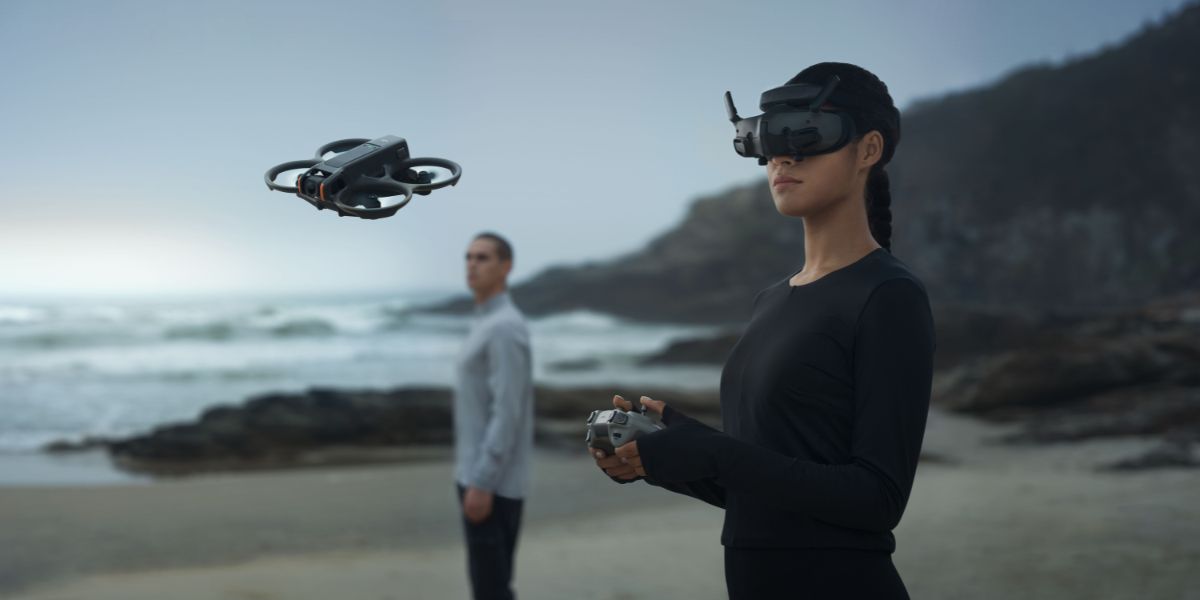
Advantages of Drone Avatars
As the applications of drone avatars continue to expand, so do the advantages they offer. Whether in surveillance and security or agriculture and environmental monitoring, these technological tools bring a myriad of benefits to various sectors. In this section, we’ll delve into two significant advantages: cost-effectiveness and accessibility and flexibility. Understanding these aspects highlights why drone avatars are rapidly gaining traction across industries.
Cost-Effectiveness
One of the most compelling arguments for integrating drone avatars into operations is their cost-effectiveness. When compared to traditional methods, drone avatars can lead to substantial savings in numerous areas:
- Reduced Labor Costs: Incorporating drone avatars means fewer personnel are required for tasks like surveillance, monitoring, and inspections. For example, in agricultural settings, drone avatars can survey extensive fields in a fraction of the time human workers would need, thus reducing labor costs significantly.
- Decreased Operational Expenses: Traditional surveillance and monitoring often require extensive equipment, transport, and fuel costs. Drone avatars can accomplish tasks using less equipment and with reduced travel, especially in remote or hard-to-reach areas. Imagine a construction company needing to assess multiple sites—doing so manually could incur hefty transportation and logistics costs, but a drone avatar streamlines the entire process.
- Data Collection Savings: The data collected by drone avatars is often more accurate and comprehensive than that gathered through traditional methods. This precision can avoid costly mistakes—for instance, identifying infrastructure issues before they escalate into more expensive repairs.
- Long-Term Investment: While the upfront cost of purchasing drone technology may seem significant, the long-term savings quickly offset these expenses. According to various industry analyses, companies can see a return on investment (ROI) within months of deployment due to savings in time, resources, and personnel management.
Consider a personal anecdote: A local farm switched to using a drone avatar for monitoring crop health. They found that, with the information gained from drone data, they prevented a major pest outbreak that could have cost them thousands of dollars. Their upfront investment in the drone was recouped in less than a growing season!
Quick Overview of Cost-Effectiveness Benefits
| Cost Aspect | Advantages of Drone Avatars |
|---|---|
| Labor Cost Reduction | Fewer personnel required for operations |
| Decreased Operational Expenses | Lowers transportation and logistic costs |
| Enhanced Data Accuracy | Prevents expensive mistakes and inefficiencies |
| Short ROI | Quick returns on initial investments |
Accessibility and Flexibility
In addition to being cost-effective, drone avatars offer remarkable accessibility and flexibility, making them an attractive option for various enterprises. Here’s a closer look at how these strengths enhance their usability:
- Remote Operation: One of the fundamental advantages of drone avatars is that they can be operated remotely. This is especially beneficial in hazardous or hard-to-reach environments. For instance, in disaster relief operations, drone avatars can assess the situation without risking human lives.
- Task Versatility: These drones can be equipped with a variety of sensors and cameras, allowing them to perform different roles—from surveillance and monitoring to delivering goods or interacting with individuals. A single drone avatar could suit multiple purposes, reducing the need for specialized equipment.
- Adaptability to Environments: Drone avatars can operate in various terrains and settings, from rural agricultural fields to urban environments. This adaptability means they can be employed across industries, providing unique solutions tailored to specific needs.
- Real-Time Communication: Equipped with communication tools, drone avatars can interact with both operators and the environment. Imagine a healthcare provider using a drone avatar to remotely check in on a patient in a rural area. This ability to communicate enhances the operator’s situational awareness and effectiveness in addressing specific issues.
Consider a case where a construction site uses drone avatars to monitor the progress of work. Not only can they provide aerial footage of the project, but they can also be adapted for safety inspections and staff communications. Their flexibility means the project manager can switch uses simply by adjusting the drone’s settings, saving time and streamlining efforts.
Summary of Accessibility and Flexibility Benefits
| Aspect | Advantages of Drone Avatars |
|---|---|
| Remote Operation | Operate in hazardous areas without risk |
| Versatile Tasks | Equipped for various operational roles |
| Terrain Adaptability | Suitable for diverse environments |
| Enhanced Communication | Real-time interaction promotes effective decision-making |
Conclusion
In summary, the advantages of drone avatars—spanning cost-effectiveness to accessibility and flexibility—are propelling their adoption across multiple sectors. Businesses can achieve significant savings while leveraging these innovations to streamline operations. As industries become increasingly aware of these benefits, the momentum for drone avatars continues to grow. In our journey through this topic, it’s fascinating to see how these technologies can reshape traditional practices and unlock new avenues for growth. As we proceed, we’ll also dive into the challenges that drone avatars face in their development, including regulations and limitations. Be sure to stay engaged—you won’t want to miss what’s coming next!

Challenges Faced by Drone Avatars
While the advantages of drone avatars are compelling, it’s equally important to address the various challenges they face in deployment and wider acceptance. As we explore the landscape of drone technology, we find that regulations, safety concerns, and limitations such as battery life present significant hurdles. Let’s dive into these challenges to understand how they impact the growth and functionality of drone avatars.
Regulations and Safety Concerns
As drone technology continues to evolve, so do the legal frameworks and regulations governing their use. Here are some key points to consider regarding regulations and safety concerns impacting drone avatars:
- Evolving Regulations: Regulatory entities like the Federal Aviation Administration (FAA) in the United States and similar bodies worldwide are actively working to create rules that ensure safe drone operation. These regulations are often evolving, which can create confusion for businesses looking to adopt this technology. For instance, restrictions around flying in urban areas or near sensitive sites can limit the operational reach of drone avatars.
- Privacy Issues: One of the central safety concerns surrounding drone avatars is privacy. The ability to capture high-definition images and video from the sky can lead to potential invasions of privacy for individuals and businesses. This issue has prompted discussions around privacy laws and guidelines, which must be thoroughly addressed to avoid misuse. Imagine operating a drone avatar to monitor a construction site only to receive complaints from nearby residents about intrusions into their personal space—balancing these interests can be challenging.
- Airspace Management: Integrating drone avatars into airspace shared with manned aircraft requires meticulous planning and air traffic management. As the number of drone users continues to rise, ensuring collisions or interference with commercial flights is paramount. This need for coordination can place additional burdens on companies wanting to use drone avatars for delivery or surveillance purposes.
- Liability and Insurance: In the event of accidents or damages caused by drone avatars, questions arise regarding liability. Who is responsible if a drone collides with another vehicle or camera surveillance inadvertently captures someone within the confines of their home? Companies need clarity on these issues, which can make insurance coverage complicated and potentially increase operational costs.
Through personal experience, a friend of mine who runs a security business faced these very issues. They invested in drone avatars meant for event security but ultimately encountered hurdles with insurance and local regulations, which restricted where they could operate the drones. This anecdote underlines the importance of understanding legalities before implementing such technologies.
Summary of Regulations and Safety Challenges
| Challenge | Description |
|---|---|
| Evolving Regulations | Constantly changing rules can create confusion |
| Privacy Issues | Potential for invasion of privacy |
| Airspace Management | Need for coordination with manned aircraft |
| Liability and Insurance Requirements | Ambiguous responsibility can complicate operations |
Limited Battery Life
Another notable challenge that drone avatars face is their limited battery life, affecting their operational efficiency and attractiveness to businesses. Here’s a closer examination of this issue:
- Operational Limitations: Most consumer drones, including avatars, function for only about 20 to 30 minutes per flight before needing a recharge. For applications requiring extended monitoring or service, this limited battery life can be a major constraint. Imagine planning to use a drone avatar for a full day of agricultural surveying only to have it grounded after half an hour of flight. This not only disrupts workflow but also necessitates careful scheduling and planning.
- Need for Technology Basic Upgrades: The quest to improve battery life has sparked ongoing research and innovation in the industry, with energy-efficient batteries and alternative power sources being explored. However, until significant breakthroughs occur, companies will have to work within the current limitations, potentially increasing operational costs for additional batteries and charging stations.
- Time-Consuming Recharging: When drone avatars run out of juice, the time taken to recharge can be substantial, further impeding efficiency. While advancements in charging technology are underway, the requirement for downtime means companies often need to bake this into their operational strategies to avoid delays.
- Weight Considerations: Adding larger batteries to extend flight time can lead to trade-offs in terms of weight, potentially limiting payload capabilities or affecting maneuverability. This need for balance poses another complex challenge when configuring drone avatars for specific tasks.
To illustrate, consider a local wildlife conservation group using drone avatars to monitor animal migrations. With the avatars’ limited battery life, they must systematically plan flights, often leading to gaps in monitoring data. This limitation hampers their ability to gather comprehensive information, stressing the importance of finding creative solutions.
Summary of Battery Life Challenges
| Challenge | Description |
|---|---|
| Operational Limitations | Limited flight time requires careful scheduling |
| Need for Tech Upgrades | Ongoing search for better battery solutions |
| Recharging Times | Downtime affects workflow and operational efficiency |
| Weight Trade-offs | Larger batteries impact mobility and payload capacity |
Conclusion
In summary, while drone avatars boast numerous advantages, they are not without their challenges. Regulations and safety concerns, as well as limited battery life, pose significant hurdles to their widespread adoption and effectiveness. It is crucial for businesses to stay informed about the regulatory landscape and develop innovative solutions for the battery constraints to fully leverage the potential of drone avatars. As we continue to explore the future of drone avatars, consider how ongoing advancements could address these challenges and reshape industries. The next sections will delve into the future of drone avatars, exploring technological advancements and potential industry impacts, so stay tuned for more exciting insights!

Future of Drone Avatars
As we look into the future of drone avatars, it’s essential to understand the technological advancements that are on the horizon and how they could reshape various industries. The developments in drone technology promise enhanced capabilities and applications, paving the way for a significant transformation in how we utilize these tools. Let’s explore these technological advances and their potential impact across different sectors.
Technological Advancements
The future of drone avatars is closely tied to various technological innovations that are beginning to emerge. Here’s a look at some noteworthy advancements that could redefine their functionalities:
- Improved Battery Technology: One of the most anticipated advancements is the development of better battery technology. Longer-lasting batteries or even alternative energy sources, such as solar power, could significantly extend the operational time of drone avatars. For instance, research into solid-state batteries could lead to more efficient energy storage, allowing drones to operate for several hours instead of just minutes.
- Artificial Intelligence (AI) Integration: AI is set to revolutionize drone capabilities. Enhanced autonomous navigation, obstacle avoidance, and real-time decision-making processes will allow drone avatars to operate more independently. Imagine a drone avatar that can dynamically adjust its flight path to prevent collisions or that can analyze data on-site to determine the best course of action—it essentially turns a drone into a smart assistant in the field.
- Advanced Sensors and Imaging: With the rise of new sensor technologies, drone avatars will likely be equipped with even more sophisticated imaging systems. This could include hyperspectral, LiDAR (Light Detection and Ranging), and enhanced thermal cameras, enabling them to provide granular data across sectors. For example, these advanced sensors can help farmers monitor crop health more accurately or assist emergency responders identify hot spots during fires.
- Enhanced Communication Systems: Future drone avatars will benefit from improved communication systems, such as 5G connectivity. Enhanced transmission speeds will enable real-time data sharing between drones and their operators, leading to better collaboration and more seamless operations. Picture a drone avatar in a disaster zone relaying information instantly to ground crews on the ground, enabling quick decisions based on the latest insights.
- Swarm Technology: Advances in swarm technology will allow fleets of drone avatars to operate collaboratively rather than individually. This multiplexing could lead to significant improvements in efficiency, especially in applications like large-scale environmental monitoring or search and rescue operations. Drones could divide tasks among themselves, executing complex missions that would be impossible for a single drone.
To illustrate, consider how a construction manager might deploy a fleet of autonomous drone avatars to monitor a large construction site. Each drone could cover different sections, communicate findings in real-time, and provide the manager with an overview of the entire operation effortlessly—truly an innovative leap from traditional monitoring methods!
Overview of Key Technological Advancements
| Advancement | Potential Impact |
|---|---|
| Improved Battery Technology | Extension of operational time |
| AI Integration | Enhanced autonomous capabilities |
| Advanced Sensors | More accurate data collection and analysis |
| Enhanced Communication | Real-time data transmission and collaboration |
| Swarm Technology | Coordinated operations for efficiency |
Potential Impact on Various Industries
The technological advancements in drone avatars will undoubtedly disrupt and enhance multiple industries. Let’s explore how these innovations could influence different sectors:
- Healthcare: Future drone avatars could play a pivotal role in remote healthcare settings. Imagine drones delivering medical supplies to rural areas or providing telemedicine services through video consultations. They could even act as mobile clinics, equipped with diagnostic tools for real-time patient assessments from a distance.
- Agriculture: As the agriculture sector continues to embrace technology, drone avatars equipped with advanced sensors will facilitate precision farming by monitoring crops and livestock more thoroughly. Farmers will make informed decisions about irrigation and pest control, leading to higher yields and reduced resource usage.
- Logistics and Delivery: With enhanced capabilities, drone avatars could lead the way for timely deliveries across urban landscapes. Think about receiving an online order via drone in just a few minutes! Logistics companies are already exploring ways to streamline last-mile delivery, and drone avatars will soon play a vital role in this transformation.
- Construction and Infrastructure: In the construction industry, drone avatars will assist in site inspections, safety monitoring, and progress tracking. They can provide real-time footage to stakeholders, enhancing communication and efficiency across teams. The ability to monitor work from different angles will also help maintain safety standards and compliance.
- Environmental Monitoring: Environmental scientists will increasingly rely on drone avatars to monitor climate change, wildlife habitats, and natural resources. These drones can cover large areas with precision, capturing data that informs conservation efforts and policy-making decisions.
Reflecting on personal experiences, a friend of mine who runs an environmental non-profit often struggles to gather comprehensive data on local ecosystems. However, the potential of using drone avatars equipped with advanced imaging capabilities could tremendously simplify their monitoring efforts, allowing them to detect changes in vegetation and animal populations effectively.
Summary of Potential Industry Impacts
| Industry | Possible Innovations and Effects |
|---|---|
| Healthcare | Remote medical supply delivery and telemedicine |
| Agriculture | Precision farming for improved yields |
| Logistics and Delivery | Faster last-mile delivery and coordination |
| Construction | Enhanced site monitoring and communication |
| Environmental Monitoring | Comprehensive ecological data collection |
Conclusion
The future of drone avatars is not just about enhancing their capabilities; it’s about revolutionizing industries and the way we interact with our environments. With ongoing technological advancements, the implications for various sectors are profound, promising increased efficiency, safety, and accessibility. As drone avatars continue to evolve, they will ultimately reshape our daily lives and professional practices. Together, the advancements and potential impacts herald an exciting era for drone technology, leading us to reimagine what these incredible machines can achieve. So, as we explore this evolving landscape, consider how you might harness the potential of drone avatars in your own industry or personal endeavors. The possibilities are limited only by our imagination!
